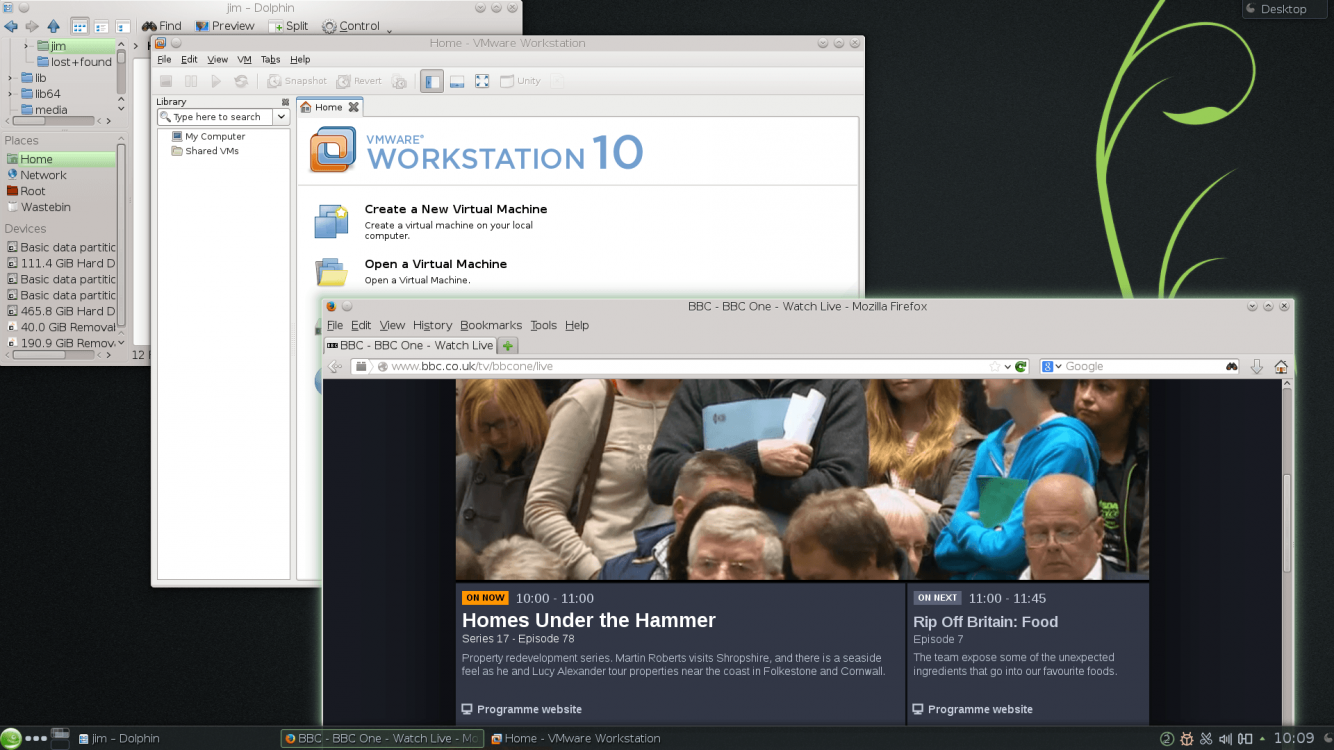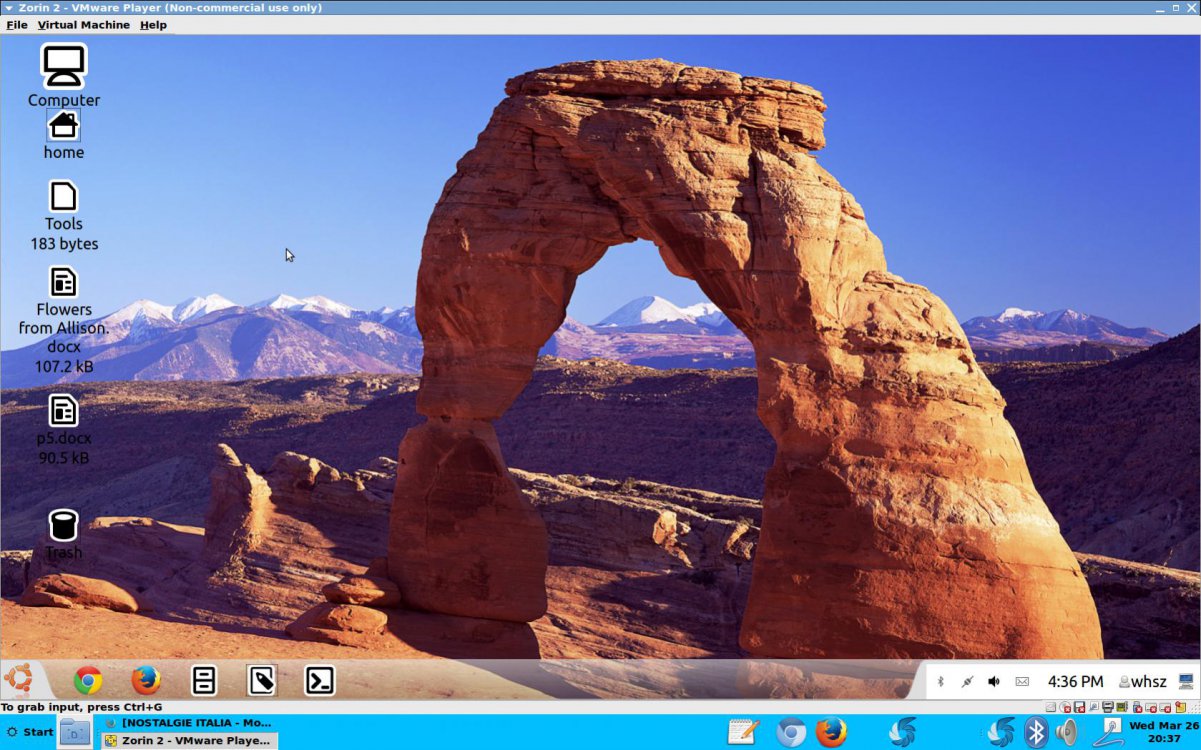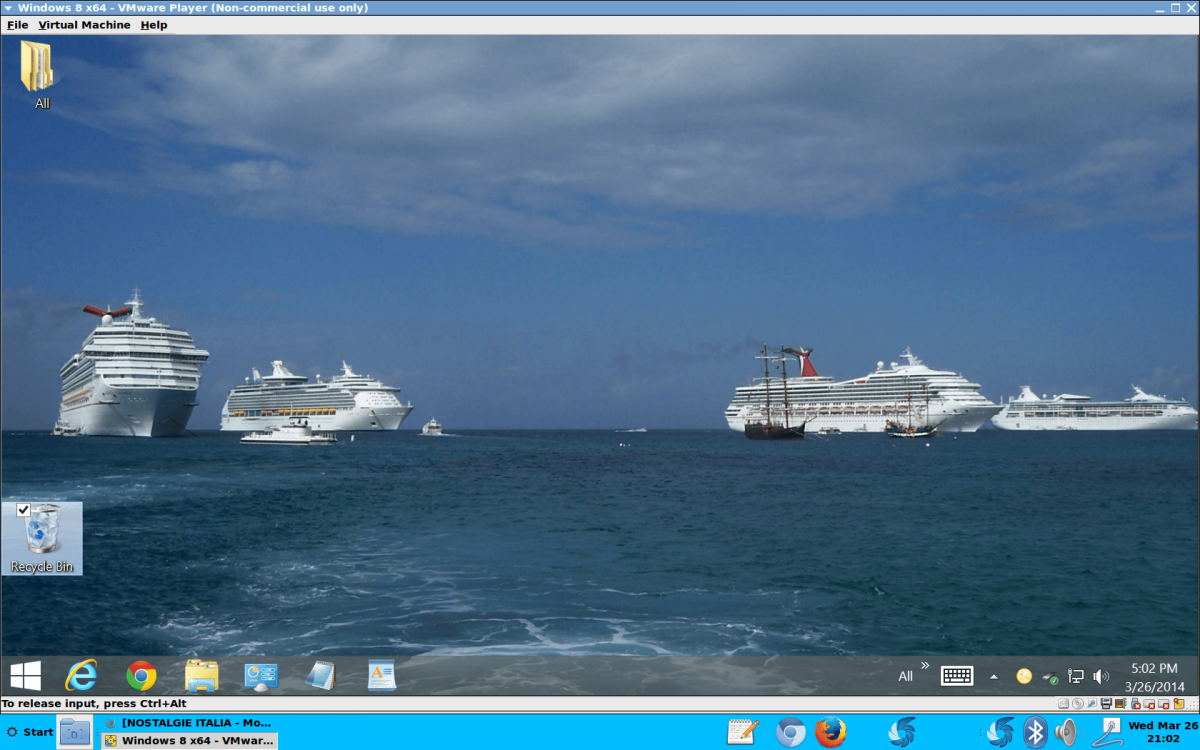
- Messages
- 4,373
- Location
- Hafnarfjörður IS
Hi there
ADDED Notes for UEFI systems --- see my last post in this thread for details when using UEFI systems.
If you haven't got Windows 8 Enterprise and you want to make a portable Windows system then it can still be done quite easily (and a good learning process too).
What you need to get acceptable performance is a USB3 stick (large enough for a Windows system) or better an SSD - if you've got or replaced an older 120 GB SD for example that will be perfect.. An SSD connected to even a USB2 port will provide a decent enough response - better if you connect the SSD to a USB3 port even with the standard SATA==>USB2 cable. An esata connection is fastest. You need also a USB installation stick.
1) Download OPENSUSE 13.1 either the full version or the Live CD -- while the live CD is less download the full version seems to work better.
2) Create a bootable USB of the downloaded distro. To do this read this link - it's better on a USB even if you DO have DVD/CD's in your machine. Faster and easier.
https://en.opensuse.org/SDB:Create_a_Live_USB_stick_using_Windows
3) boot the USB -- Very important press F2 to select your language and keyboard and F3 to select the correct video resolution for your monitor.
4) In the selections after boot choose KDE (it's the easiest and most Windows like interface for people not used to Linux).
5) Now follow the instructions here EXACTLY - especially the BOOT LOADER otherwise you will write the boot record to your Windows HDD and you'll get problems booting Windows if the external HDD isn't connected to your system. (You can use EITHER the full distro like I've suggested or you can use the live CD. I prefer the full distro as there are some things I like to run on the Linux system. The Live CD is better for just a leaner mean machine.
6) after booting install VMWARE PLAYER
(instructions -- two links)
Installing openSUSE 13.1 onto an External Hard Drive. - Blogs - openSUSE Forums
How to install VMware Player on OpenSUSE 13.1
7) Install your Windows Guest OS
8) Now you've got a 100% PORTABLE decent Windows OS (and Linux too).
The same mechanism can be done with other Distros -- the main thing is to ensure the GRUB LOADER doesn't get written to your internal HDD's. Linux has no problem booting and running from external devices.
If you hose up GRUB so it gets written to your Windows HDD - simply insert your Windows install media, choose repair system ==> command prompt
uninstall - Removing GRUB from windows system after uninstalling Ubuntu from Windows 7 - Ask Ubuntu
(Although this refers t UBUNTU it's the same for almost any Linu distro).
Have fun -- great learning tool too for Linux and Virtual Machines.
(Allow your machine to boot legacy OS'es if you have Protected boot / EFI - that way the system is genuinely portable rather than by creating an EFI version).
Screenshot -- Suse 13.1 with Vmware workstation 10.1 and BBC TV running totally off eternal SSD.
Cheers
jimbo
ADDED Notes for UEFI systems --- see my last post in this thread for details when using UEFI systems.
If you haven't got Windows 8 Enterprise and you want to make a portable Windows system then it can still be done quite easily (and a good learning process too).
What you need to get acceptable performance is a USB3 stick (large enough for a Windows system) or better an SSD - if you've got or replaced an older 120 GB SD for example that will be perfect.. An SSD connected to even a USB2 port will provide a decent enough response - better if you connect the SSD to a USB3 port even with the standard SATA==>USB2 cable. An esata connection is fastest. You need also a USB installation stick.
1) Download OPENSUSE 13.1 either the full version or the Live CD -- while the live CD is less download the full version seems to work better.
2) Create a bootable USB of the downloaded distro. To do this read this link - it's better on a USB even if you DO have DVD/CD's in your machine. Faster and easier.
https://en.opensuse.org/SDB:Create_a_Live_USB_stick_using_Windows
3) boot the USB -- Very important press F2 to select your language and keyboard and F3 to select the correct video resolution for your monitor.
4) In the selections after boot choose KDE (it's the easiest and most Windows like interface for people not used to Linux).
5) Now follow the instructions here EXACTLY - especially the BOOT LOADER otherwise you will write the boot record to your Windows HDD and you'll get problems booting Windows if the external HDD isn't connected to your system. (You can use EITHER the full distro like I've suggested or you can use the live CD. I prefer the full distro as there are some things I like to run on the Linux system. The Live CD is better for just a leaner mean machine.
6) after booting install VMWARE PLAYER
(instructions -- two links)
Installing openSUSE 13.1 onto an External Hard Drive. - Blogs - openSUSE Forums
How to install VMware Player on OpenSUSE 13.1
7) Install your Windows Guest OS
8) Now you've got a 100% PORTABLE decent Windows OS (and Linux too).
The same mechanism can be done with other Distros -- the main thing is to ensure the GRUB LOADER doesn't get written to your internal HDD's. Linux has no problem booting and running from external devices.
If you hose up GRUB so it gets written to your Windows HDD - simply insert your Windows install media, choose repair system ==> command prompt
uninstall - Removing GRUB from windows system after uninstalling Ubuntu from Windows 7 - Ask Ubuntu
(Although this refers t UBUNTU it's the same for almost any Linu distro).
Have fun -- great learning tool too for Linux and Virtual Machines.
(Allow your machine to boot legacy OS'es if you have Protected boot / EFI - that way the system is genuinely portable rather than by creating an EFI version).
Screenshot -- Suse 13.1 with Vmware workstation 10.1 and BBC TV running totally off eternal SSD.
Cheers
jimbo
Attachments
Last edited:
My Computer
System One
-
- OS
- Linux Centos 7, W8.1, W7, W2K3 Server W10
- Computer type
- PC/Desktop
- Monitor(s) Displays
- 1 X LG 40 inch TV
- Hard Drives
- SSD's * 3 (Samsung 840 series) 250 GB
2 X 3 TB sata
5 X 1 TB sata
- Internet Speed
- 0.12 GB/s (120Mb/s)







